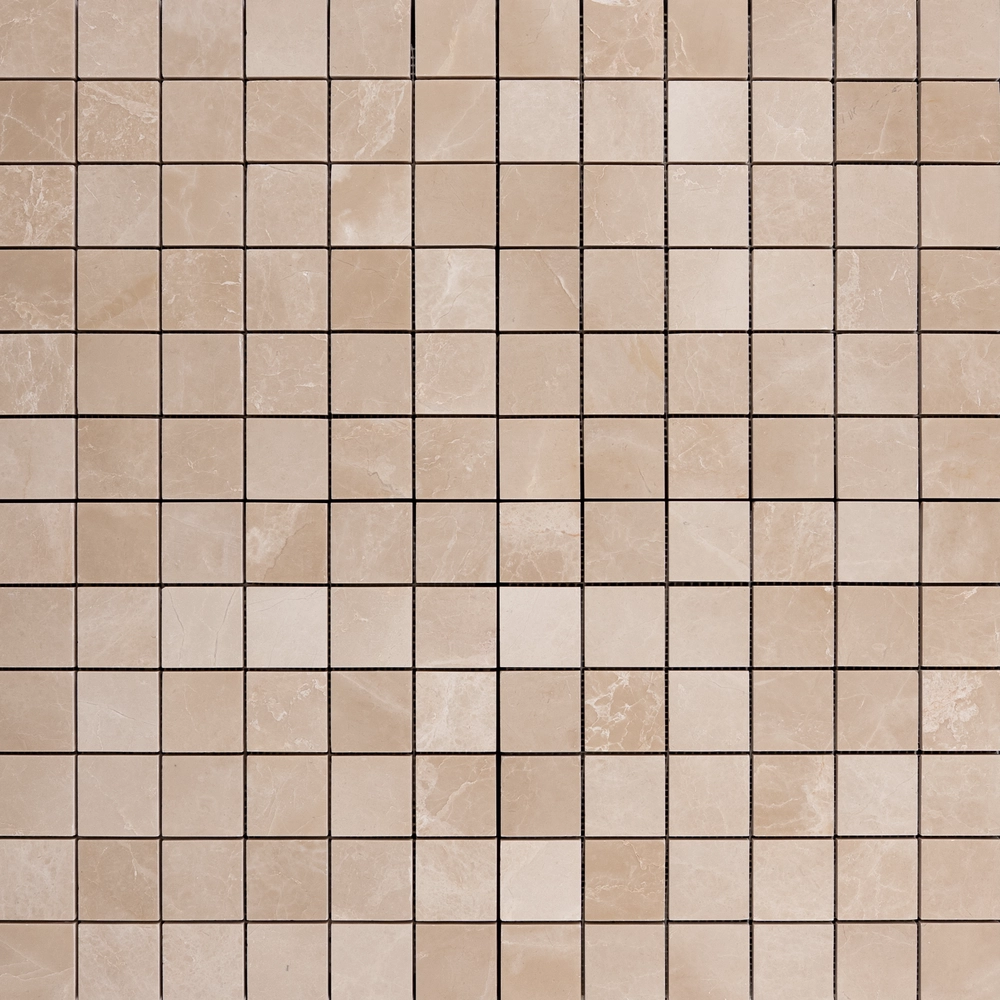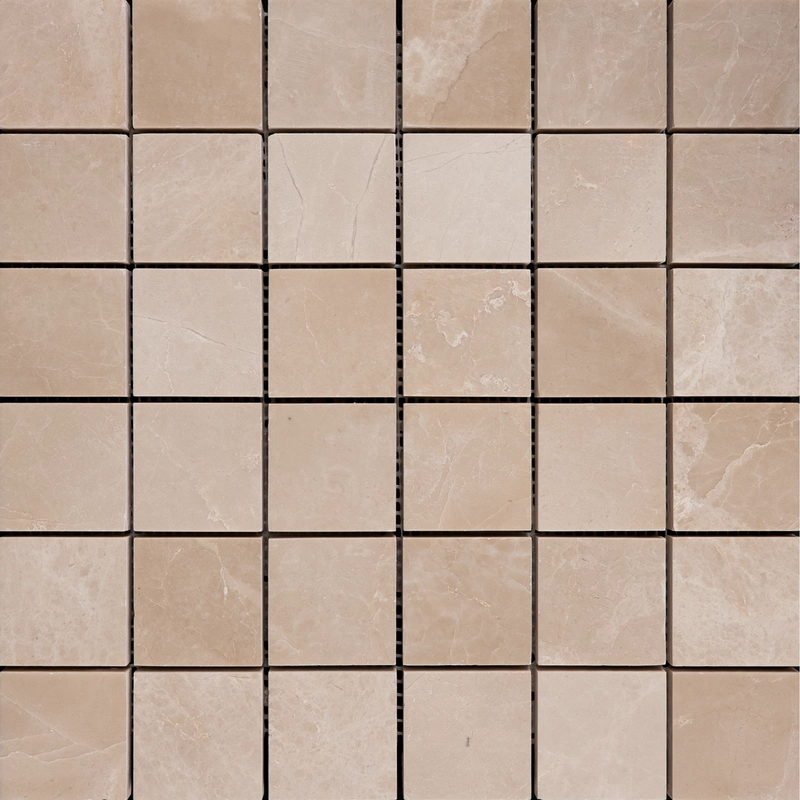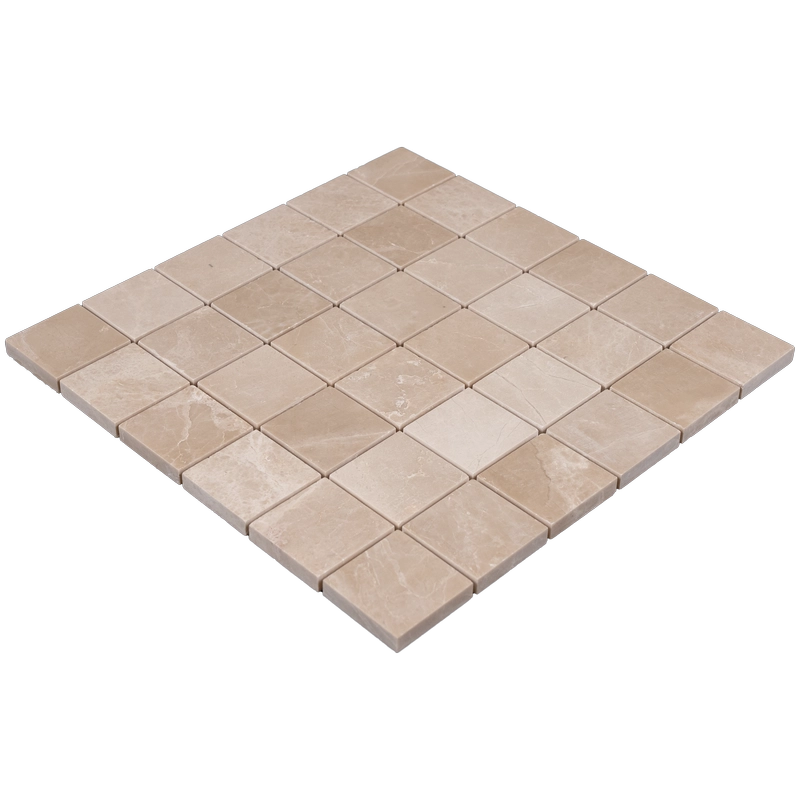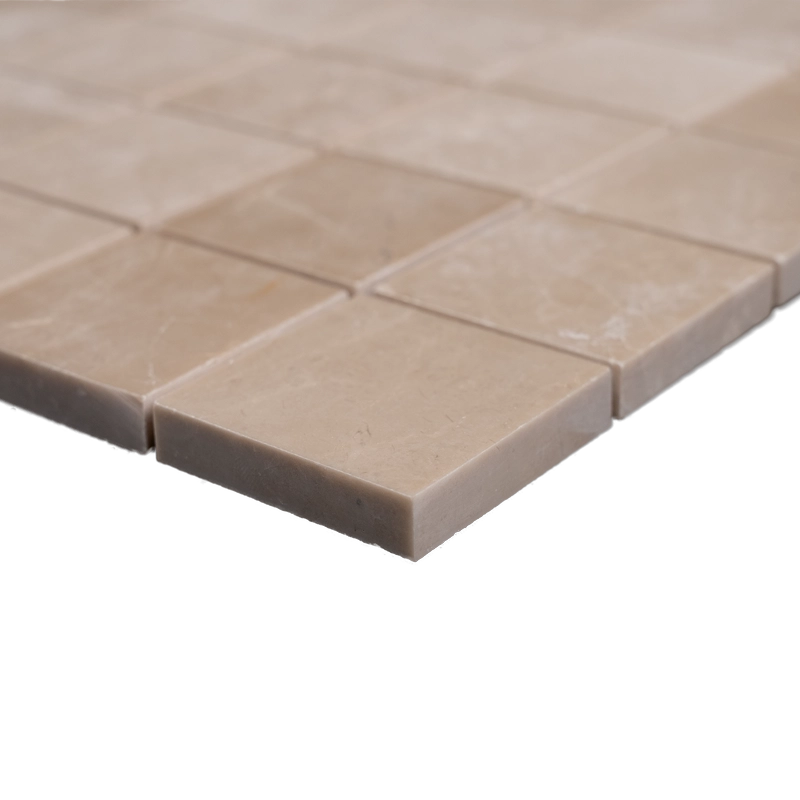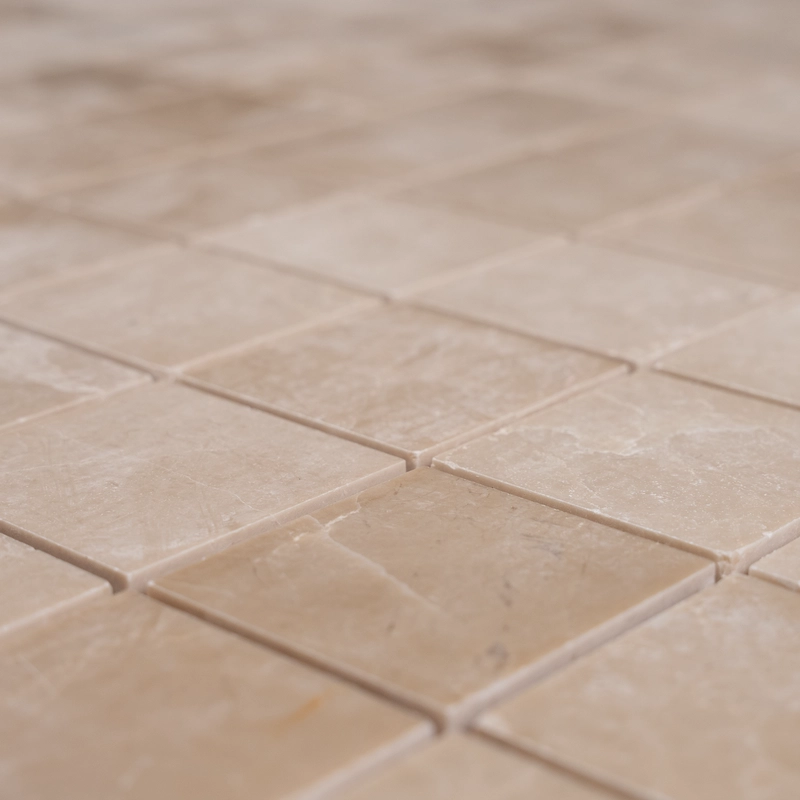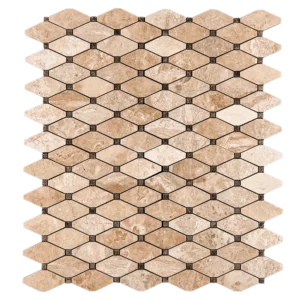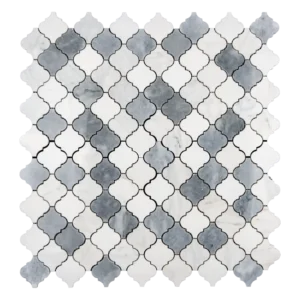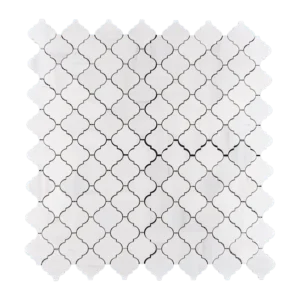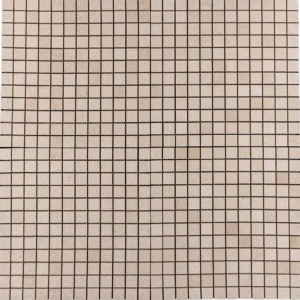Installation Guide – Botticino 2″x2″ Polished Marble Mosaic Tile
Material Notes
Premium Botticino beige marble with a polished finish.
2″x2″ square mosaic pieces, mesh-mounted on ~12″x12″ sheets (some lots may be paper-faced).
Suitable for walls, backsplashes, shower surrounds, and light-traffic residential floors. Polished surfaces may be slippery when wet.
Step 1: Surface Preparation
Ensure substrate is clean, dry, flat (≤1/8″ in 10′), and structurally sound. Patch or skim coat as needed.
Approved substrates: cement backer board, properly cured concrete, or ANSI-compliant mortar bed.
In wet areas, install an ANSI A118.10 waterproofing membrane. Shower floors require a ¼” per foot slope to drains.
Use white setting materials under light marble to avoid shadowing or picture-framing.
Step 2: Dry Layout & Planning
Blend sheets from multiple cartons to evenly distribute natural veining and tone.
Snap level reference lines and plan perimeter/fixture cuts for balance.
Trim mesh edges and stagger seams so the sheet grid is invisible after installation.
Step 3: Adhesive Application
Use white, polymer-modified thin-set rated for natural stone (ANSI A118.4/A118.15). Avoid premixed mastic, especially in wet areas.
Trowel & Technique:
3/16″ V-notch or 1/4″×3/16″ V-notch on flat substrates.
Key in thin-set with the flat side, comb in one direction, then lightly flatten ridges to avoid telegraphing through small tiles.
Work in areas you can cover in 10–15 minutes to prevent skinning.
Step 4: Setting the Mosaics
Place sheets along layout lines, pressing with a rubber grout float or beating block for full contact and a flat plane.
Lift and reset if lippage occurs; back-butter individual tiles if needed.
Clean squeeze-through thin-set immediately with a soft, barely damp sponge to protect polished surfaces.
For paper-faced sheets: set paper out, beat in, lightly dampen after initial grab (~10–20 min), remove paper, then true up joints.
Step 5: Cutting & Detailing
Use a wet saw with a continuous-rim diamond blade; tape the cut line to minimize chip-out.
For small trims, use mosaic nippers sparingly; finish edges with a rubbing stone.
Finish exposed edges with stone trim, metal profiles, or matching moldings.
Step 6: Grouting
Allow adhesive to cure (typically 24 hours).
Use unsanded grout for joints ≤1/8″ to protect polished surfaces.
Optional: apply marble-safe grout release or pre-seal to minimize pigment uptake; always test first.
Pack joints diagonally with a rubber float; clean with minimal water to prevent washout, shading, or grout haze.
Step 7: Sealing
After grout cures (~72 hours), apply a penetrating, breathable sealer approved for marble and grout.
Re-seal periodically based on exposure (every 1–2 years in wet or high-use areas).
Maintenance
Clean only with pH-neutral, non-abrasive stone cleaners. Avoid acids, vinegar, bleach, or abrasive pads.
In showers, squeegee or wipe dry to prevent mineral deposits; use marble-safe scale removers if necessary.
Movement Joints
Honor structural joints and provide soft joints per TCNA EJ171 at perimeters, changes of plane, and large expanses.
Use 100% silicone (stone-safe) where tiles meet dissimilar materials or inside corners.
Important Notes
Natural marble varies in tone and veining; dry-lay and blend sheets before installation. Expect slight size/thickness tolerances common to mosaics.
Protect polished surfaces during installation and cleanup using soft sponges or microfiber cloths.
Stonemarket USA is not responsible for substrate issues or improper installation. Professional installation is recommended.


